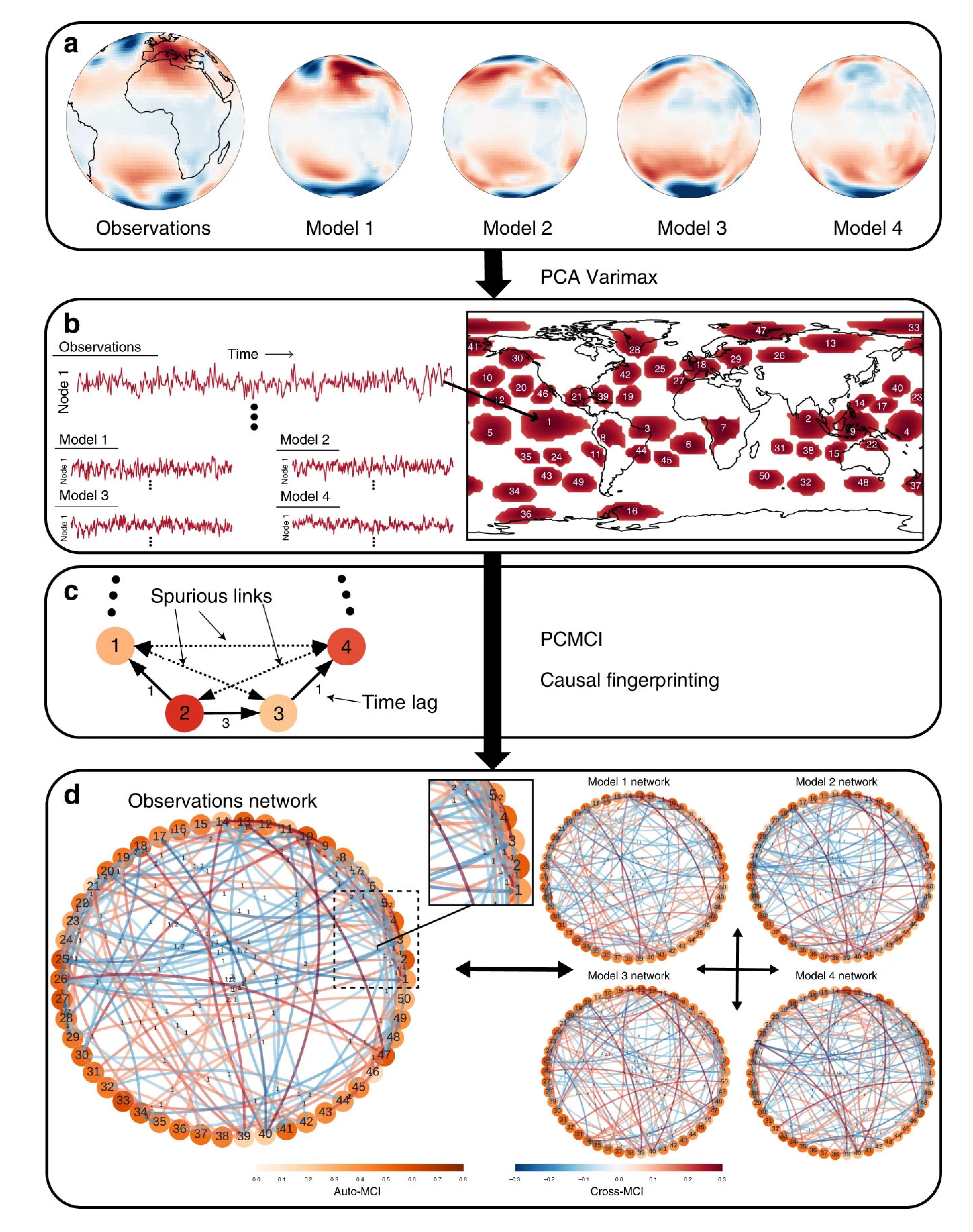AI for inference
Machine learning techniques to understand the complex climate system. Many climate phenomena (e.g. teleconnections, modes of climate variability, extreme event pattern occurrences) have historically been studied through empirical correlations, supported by idealized numerical modelling experiments. However, in the climate system - as for many other complex coupled scientific systems - it is often difficult to tell apart true causal effect chains from indirect or coincidental correlations.  In addition, low-dimensional correlation analyses will necessarily approximate the net effect of many interacting processes in the form of a small number of proxy variables.
In addition, low-dimensional correlation analyses will necessarily approximate the net effect of many interacting processes in the form of a small number of proxy variables.
Explainable machine learning and causal discovery algorithms can help us uncover and understand complex, high-dimensional climate interactions. For example, this could help us evaluate climate models in sophisticated ways, as is illustrated in the figure on the right for the case of causal model evaluation (from Nowack et al. Nature Communications, 2020). Here, an unsupervised dimension reduction approach is applied first (PCA Varimax, subfigure b) to identify major modes of climate variability in sea level pressure data (snapshots of the variable are shown in a). As demonstrated in b, the centres of action of these modes of variability are distributed across the globe. Afterwards, a causal discovery approach (PCMCI, introduced in Runge et al. Science Advances, 2019) is used to infer (lagged) causal interaction networks (d) between these modes of variability, as evident from the underlying time series (insets in b) characterizing these modes. This helps us quantify and visualize how climate variability in one part of the world can influence weather patterns in other world regions.
A key advantage of these data-driven approaches is that they can be applied to both Earth observations and climate model data. The resulting model-derived networks can subsequently be compared to the network(s) derived from observational data. This, in turn, opens up new pathways for climate model evaluation, as illustrated in d, using network similarity metrics.
Selected publications:
(1) Nowack et al. Causal networks for climate model evaluation and constrained projections. Nature Communications (2020).
(2) Runge et al. Detecting and quantifying causal associations in large nonlinear time series datasets. Science Advances (2019).
(3) Kuhn-Régnier et al. The importance of antecedent vegetation and drought conditions as global drivers of burnt area. Biogeosciences (2021).
(4) Nowack et al. On the role of ozone feedback in the ENSO amplitude response under global warming. Geophysical Research Letters (2022).
